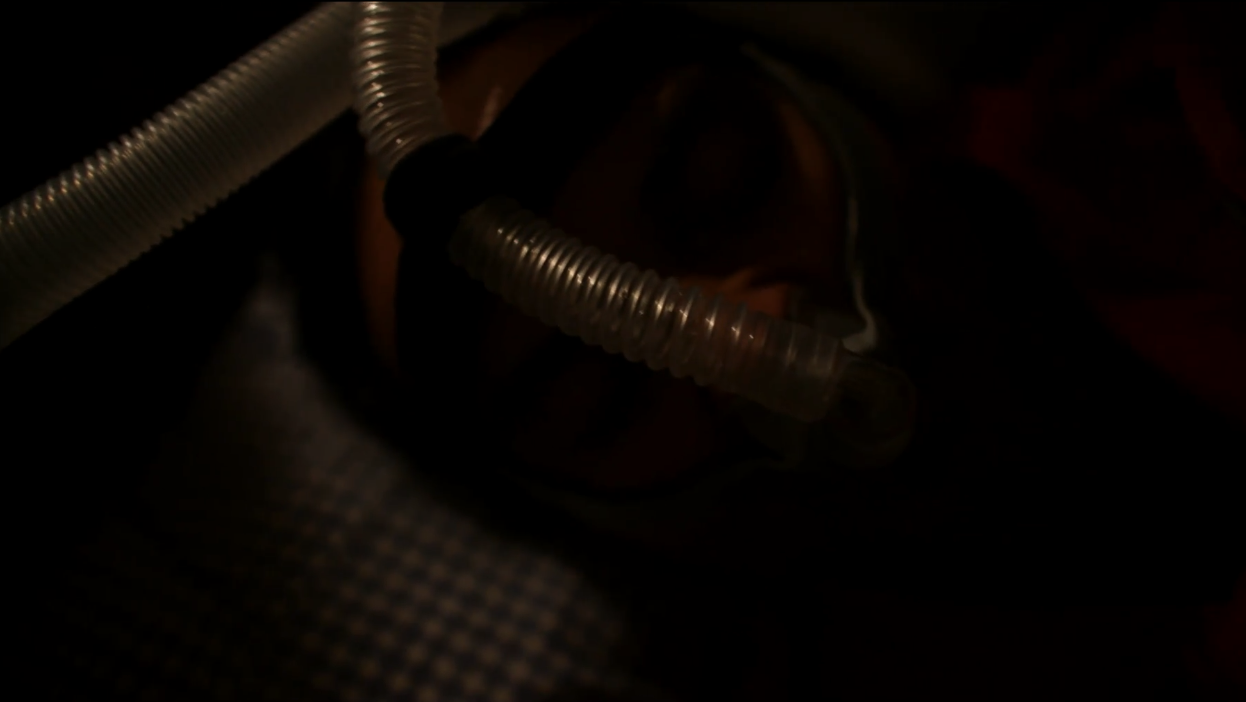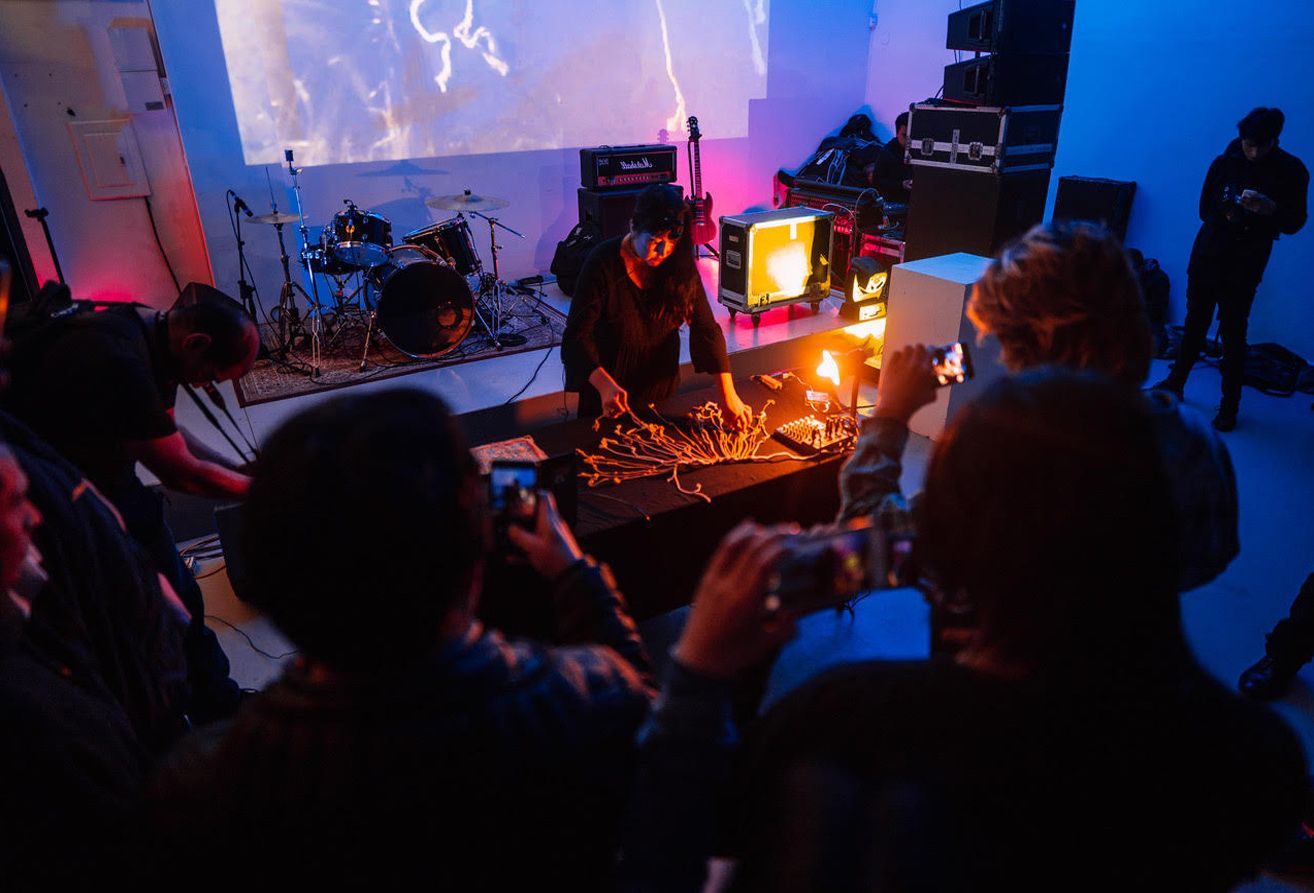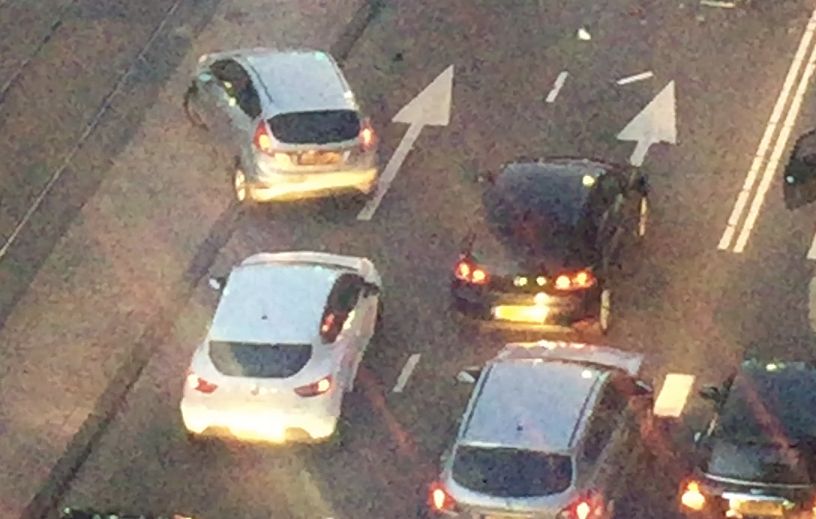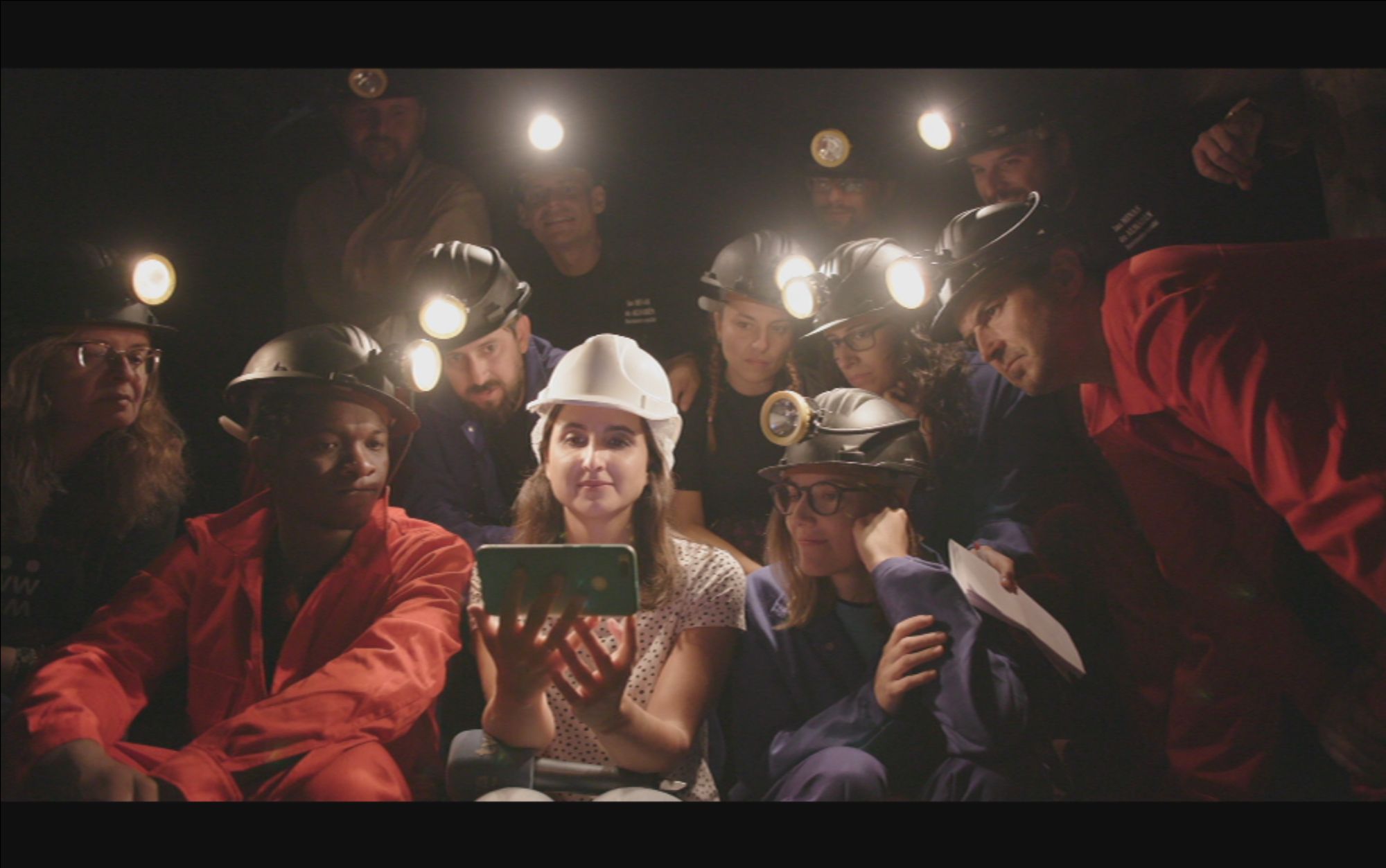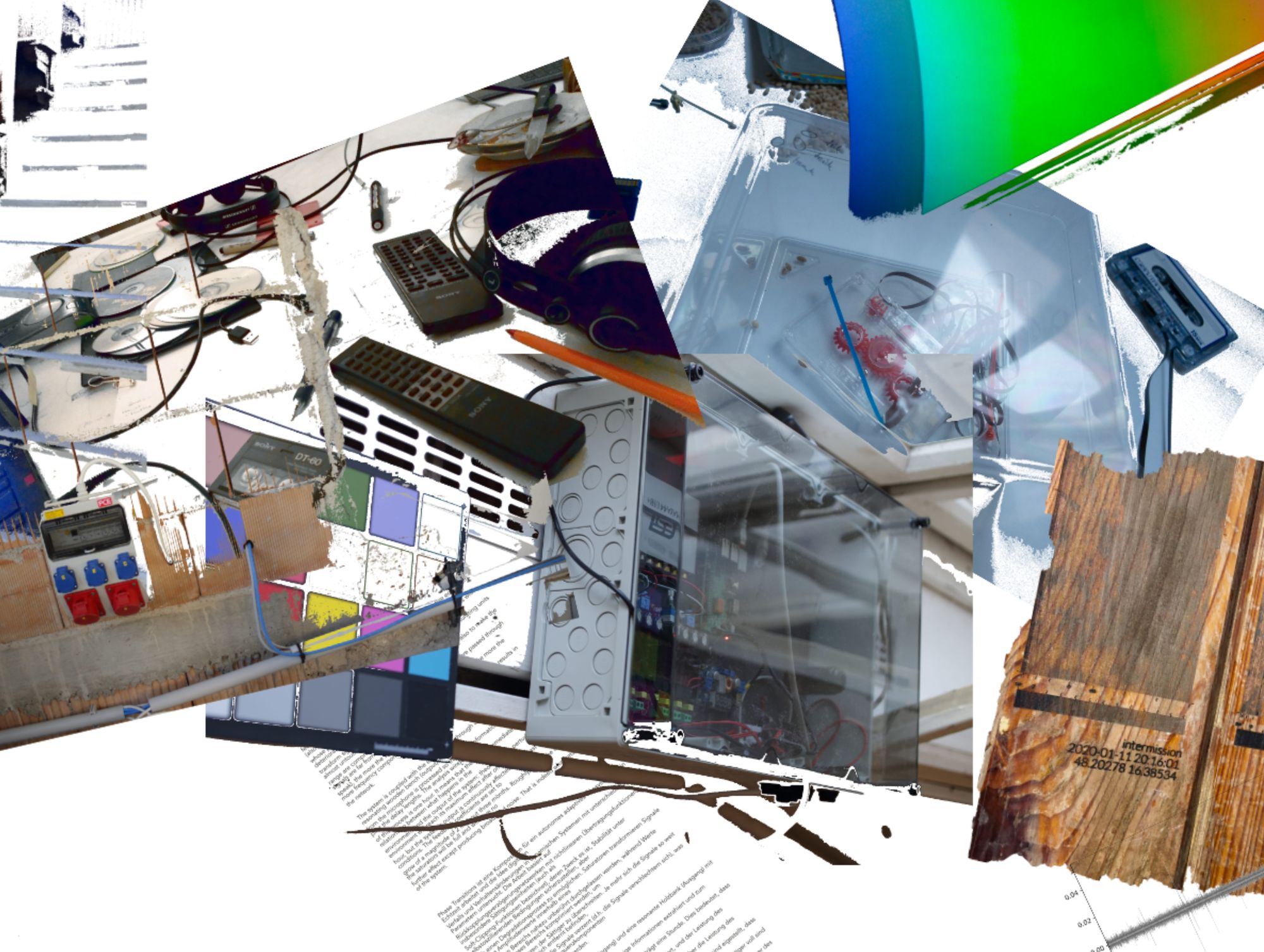VIS issue 7 “Metamorphoses – Tales of the Ever-Changing”, features five expositions that in different ways relate to the theme. Metamorphosis and transformation are shown as processes of pervasive counter-movements and as questioning of the ingrained, expected and prevalent, and provide both aesthetic, political and social as well as personal perspectives on transformation. Contemporary artistic processes take on an ever-changing dynamic.
VIS #7 - THEME: METAMORPHOSES – TALES OF THE EVER-CHANGING
The broad and metaphorical theme of #7, metamorphosis, has proved to both transcend and be concretized by the dramatic course of events in the world. In news channels and social media, we can follow the ongoing development of a brutal war of aggression in Ukraine, which transforms the country into a living hell. In our call for this issue, we questioned whether it is possible to relate practices of transformation in art to our time where change is increasingly present in everyday life. We also addressed the fear of the world balancing at a tipping point, at which every step in any direction is of crucial importance. These issues have proved to be very relevant over the past weeks, in different ways than we anticipated when we formulated the call, as the war in Ukraine eats its way through the country hour by hour, day by day. Strategies for survival have become very concrete and metamorphosis and transformation are manifested in dark and terrible dimensions that we have not seen in Europe for many decades.
This issue’s topic is vast and invites for a myriad of interpretations and perspectives. The five expositions take on the theme in different ways. There are aesthetical, political, social, and personal takes on the transformation of material, history, and process as well as on methods and theory. A reflection I make, as a member of the Editorial Committee for almost five years, is that the themes that we propose for the different issues, however different they might seem, tend to spill into each other by associations and as “recollections” of previous topics. The different issues begin to serve as sounding boards to each other. In this issue, I am happy to hear the echoes of History Now (#3) in the exposition of Arturo Delgado Pereira’s reenactment of the miner’s strike in Almadén. You feel the shadow of Contagion (#6) rest over Klara Waara’s texts on pandemic isolation and transformation. And in Paola Torres Nunez del Prado’s sonified textiles, and in Tobias Leibetseder´s fragmentations, you rediscover issues from Affecting material and technique (#4). Sergio Montero Bravo’s transformation into an activist researcher in environmental artistic practices in rural places, is possibly pointing forward to upcoming topics and resonates very well in this issue. To think of artistic research as sounds and echoes resonating within the world of art and society is for me as a musician a congenial way of relating different issues and art forms to each other and VIS is more and more becoming this “sounding space” as we start to build an archive of several issues. I recommend you also make visits to this resonating archive.
But here are the five steaming fresh contributions to the latest issue. What, to me, is really striking in these expositions is how all the contributors are questioning their own practice – with a sometimes pervasive transformation of the “normal” know-how inherent in the artistic practice. Like the documentary filmmaker that works with performance and reenactment, the architect that questions the meaning of “producing more of the same, just a little bit greener, or a little bit more social”, and the visual artist discovering and admitting that she is a poet. These examples of transformative processes are part of an artistic research tradition of unlearning and of an autocritical questioning of skills that forms a particular and prolific strand within the field.
Paola Torres Núnes del Prado The Sonified Textiles within the Text(il)ura Performance: Cross-cultural Tangible Interfaces as Phenomenological Artifacts works with sonified textile controllers – textile sensor-based tangible interfaces – that are used in sound performances. The textile artefacts and the fiber-based controllers reference the cultures of Paula’s country of origin, Peru. The work falls within the scope of smart textiles and of computer-human interaction as well as being exquisite phenomenological works of art. The sonified controllers offer experimental and alternative ways of performing sound art/electronic music. This research is positioned in a context of a group of women of Latin American origin who develops smart textiles and is also part of a collective of smart textile-designers who question the history of computing from a feminist perspective.
Klara Waara Ta Form (Taking Form) has its own transformative development –during the publishing process it changed from a sculptural and video-based exposition into a strong poetic text moving around isolation and transformation during pandemic lock down. The text is in Swedish. The little film with a plant-louse blinks mildly humorously to Kafka. The research examines the powers and limitations of fantasy, and the text describes a trajectory where the visual artist appropriates the role of a poet to explore the possibilities for change and movement in isolation. As thinking, reading, and writing alters the protagonist, the appropriating artist becomes appropriated by language. The gradual blending with the observed subjects raises questions about the distinction between the internal and external.
Arturo Delgado Pereira We Would Strike!: Beyond Representation in a Post-Industrial town. The exposition explores the documentary film fieldwork and the relation to reality by showing the process of filming a “real” event (a strike in the mercury mines in Almadén, Ciudad Real, Spain in 1984), as a reenactment of the strike today, 35 years later. The filmmaker uses the 11 days of filming in the mine to engage in discussions with the participating locals about the possible transformation of post-industrial Almadén into something else than a mining – or ex-mining – town. This exposition also considers the filmed material as audiovisual fieldnotes from which new thoughts, questions and creative actions might develop. It is not a documentation of the filmmaking process, but a way to open the questions, thoughts and feelings that emerged from the filmmaking itself.
Sergio Montero Bravo Territorial Art, Design & Architecture describes a project that explores possibilities that become visible when public space is viewed from perspectives beyond the urban norm. The exposition is truly transformative – both in the way it describes several territorial artistic projects and in the way it depicts Sergio Montero Bravo’s own professional metamorphosis. All the projects belong to the realm of social practice, and deal with communality, togetherness and mutual beneficial interdependency between species. This is a strong example of artistic research as a critical practice, a practice that shows how an activist agenda could be informed, supported, and strengthened by research methods and processes.
Tobias Leibetseder and Thomas Grill Fragments in Time has built a processual sculpture, Fragments, that is in permanent development. The material comes from the artistic research project Rotting Sounds: waste, things collected, things stored and put away, texts, pictures, data, sounds, et cetera. The erosion processes of all these media representations are infinite, the decomposition seems to explode into the digital space and very soon you find yourself literary lost in transformation. The underlying critique of (and threat to?) digital media, information and technology becomes evident in this breathtaking exposition where the dimensions are congenial with the sensation of a world falling apart piece by piece. “What will happen with all the inherent information in a time when it will be decontextualized, deteriorated, and needs to be reinterpreted by future generations when found?”
Anna Lindal, Editor of VIS #7
Cover Image: Image borrowed from Arturo Delgado Pereiras exposition “We Would Strike!: Beyond Representation in a Post-Industrial Town.” VIS #7 “Metamorphoses – Tales of the Ever-Changing”.
